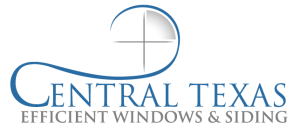
In Texas, where the climate can be hot and humid, choosing environmentally friendly siding options that can withstand these conditions is essential. They can help regulate indoor temperatures, reduce energy consumption for cooling, and contribute to your overall comfort while minimizing environmental impact at home.
If you require new siding installation for your home, here are some environmentally friendly siding options to consider:
Fiber Cement Siding
Fiber cement siding is a durable and environmentally friendly option that can withstand the heat and humidity of Texas. Made from a mixture of cement, sand, and cellulose fibers, fiber cement siding is resistant to moisture, pests, and fire. Fiber cement siding is heat-resistant and does not warp, crack, or fade when exposed to intense sunlight and high temperatures. This makes it a suitable choice for Texas homes, where the sun’s UV rays can cause damage to less resilient siding materials.
Some fiber cement siding products also incorporate recycled materials, which reduces the demand for virgin materials and diverts waste from landfills. Fiber cement siding is highly durable and has a long lifespan, often lasting for several decades with minimal maintenance. Its longevity reduces the need for frequent replacement. For maintenance, fiber cement siding typically only requires occasional cleaning and repainting every 10-15 years. Fiber cement siding is available in various styles and can mimic the look of wood, stucco, or masonry, providing versatility for different architectural types.
Brick or Stone Veneer
Brick or stone veneer siding is a type of exterior cladding that mimics the appearance of traditional brick or stone construction but is thinner and lighter in weight. These materials have excellent thermal mass properties, meaning they can absorb and store heat during the day and release it gradually at night. This helps regulate indoor temperatures and helps keep homes cool in the hot Texas summers.
Texas experiences a wide range of weather conditions, and brick and stone veneer siding are highly durable materials that are resistant to damage from UV rays, heat, moisture, and wind. Brick and stone veneer siding require minimal maintenance over their lifespan, typically only needing occasional cleaning to maintain their appearance. Lasting for decades, brick or stone veneer siding’s longevity reduces the need for frequent replacement. When sourced responsibly from quarries with responsible practices, these materials have low environmental impact.
Recycled Metal Siding
Siding made from recycled metals, such as aluminum or steel, is another environmentally friendly option for Texas homes. It typically consists of metal panels or sheets that are manufactured from recycled metal scrap, often ranging from 50% to 90% recycled content. This reduces the demand for virgin resources and diverts waste from landfills.
Metal siding is highly durable and resistant to corrosion, pests, fire, and weathering. In humid regions like Texas, moisture can be a concern for building materials. Recycled metal siding is also naturally resistant to rot, mold, and mildew, helping to prevent moisture-related issues and prolonging the lifespan of the siding. Its longevity reduces the need for frequent replacement, requiring only minimal maintenance and occasional cleaning over its lifespan. Some metal siding products are designed with reflective coatings or finishes that can help reduce heat gain and lower cooling loads in buildings. This can contribute to the energy efficiency of your home.
Stucco
Made from a mixture of cement, sand, lime, and water, stucco siding is a traditional and environmentally friendly option for Texas homes. It has natural insulating properties that can help keep homes cooler by resisting heat transfer. Its thick composition and dense material provide a barrier against the sun’s heat, helping to maintain comfortable indoor temperatures and potentially reducing the need for excessive air conditioning.
Stucco siding is highly durable and resistant to fire, pests, and weathering, which reduces the need for frequent replacement. While Texas is known for its hot climate, it can also experience periods of heavy rainfall and humidity. Stucco siding is resistant to moisture penetration, helping to prevent moisture damage, mold, and rot. It requires minimal maintenance over its lifespan, typically only needing occasional cleaning and repainting every 10-15 years. To reduce environmental impact, it is important to ensure that stucco products are sourced responsibly and have minimal synthetic additives.
To ensure proper installation techniques, maximize energy efficiency, and optimize the sustainability of your siding choice, it is recommended to work with a professional to install siding for your Texas home. A professional can assess your home’s specific needs, recommend the most suitable eco-friendly siding options, and execute the installation process with precision and attention to detail.
